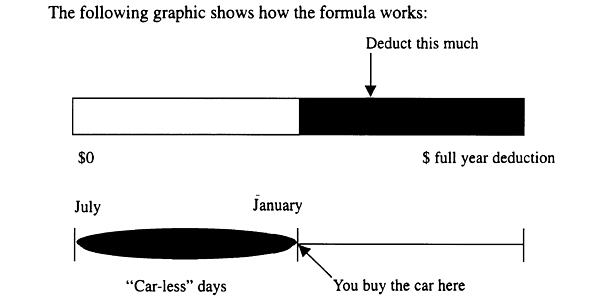INCOME TAX ASSESSMENT ACT 1936 (ARCHIVE)
Calculating car expense deductions
TABLE OF DIVISIONS
| 1 | Overview of the main points in this Schedule |
| 2 | Choosing which method to use |
| 3 | The ``cents per kilometre'' method |
| 4 | The ``12% of original value'' method |
| 5 | The ``one-third of actual expenses'' method |
| 6 | The ``log book'' method |
| 7 | Keeping a log book |
| 8 | Odometer records for a period |
| 9 | Retaining the log book and odometer records |
| 10 | Situations where you don't need to use one of the 4 methods |
| 11 | Definitions of ``car'', ``car expense'', ``holding a car'' and ``owning a car'' |
Using the ``12% of original value'' method, you deduct 12% of the cost of the car when you acquired it, or 12% of its market value when you first began to lease it.
4-2(2) [Maximum deduction]But the most you can deduct using this method is 12% of the motor vehicle depreciation limit for the income year when you first used the car for any purpose (if you own it) or when you first began to lease it.
Note:
Section 57AF deals with motor vehicle depreciation limits.
4-2(3) [Reduced deduction]Your deduction is reduced if you did not own or lease the car for the whole income year. You can only deduct the amount worked out using the formula:
| full year deduction × |
(365
−
number of car-less days)
365 |
The full year deduction is the amount you could deduct if you had owned or leased the car for the whole income year.
A car-less day is a day when you did not own or lease the car.

This information is provided by CCH Australia Limited Link opens in new window. View the disclaimer and notice of copyright.
